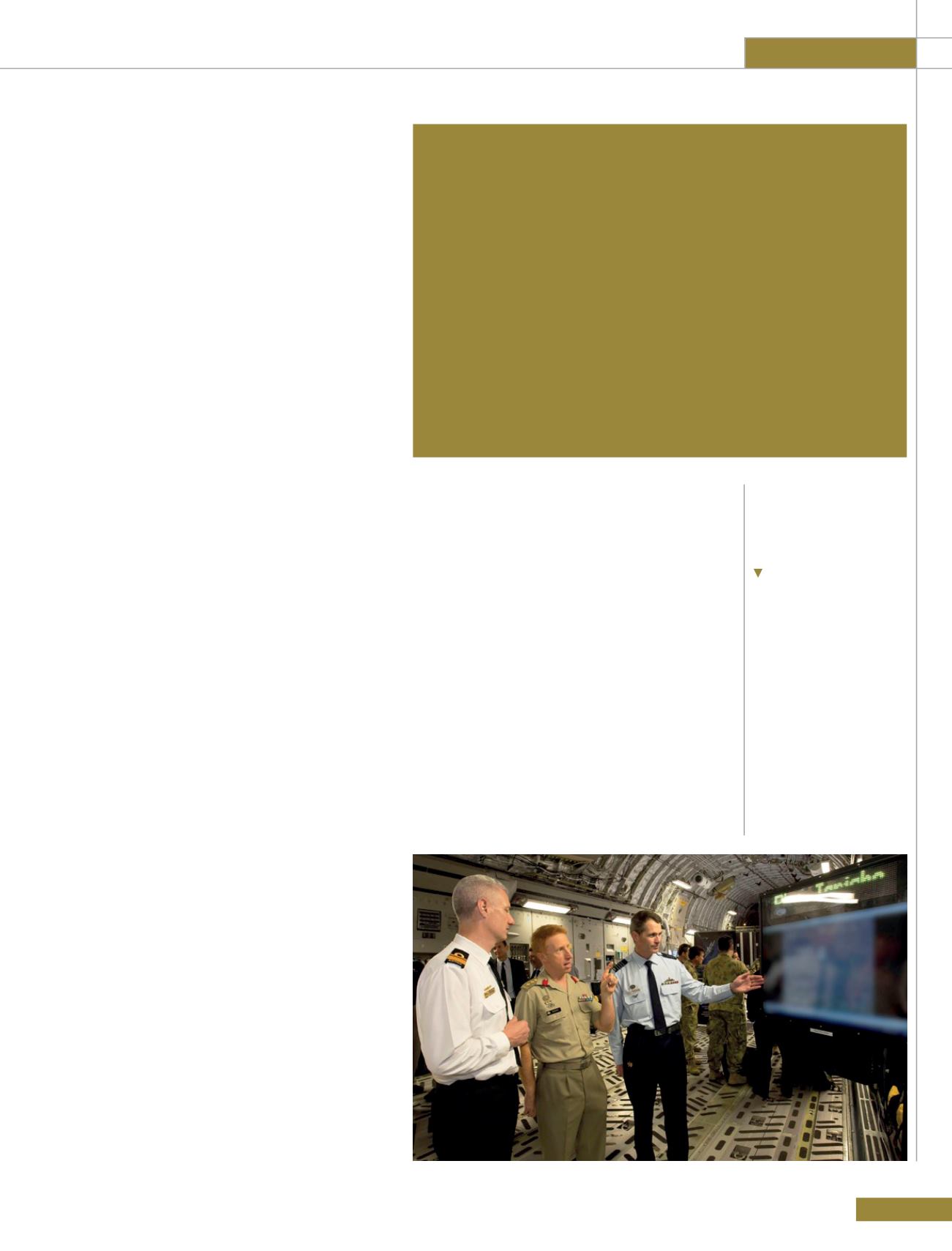
ROOM
95
Opinion
On 21 March 2017, the Space Industry Association
of Australia (SIAA) released a white paper ‘Advancing
Australia in Space’, in which it asserted that the
Australian space sector could, with the ‘right impetus’,
double its current annual revenues of approximately
US$2.5 billion (about 0.8 percent share of the global
space economy) within five years and that four
percent global market share could be a realistic goal
within 20 years. The ‘right impetus’ would be “the
establishment of an Australian Space Agency to lead a
cohesive national space strategy” [4].
Civil space leadership
The SIAA white paper has been presented to the
Minister for Industry, Innovation and Science for his
consideration [5]. Although responsibility for specific
aspects of space activities is disparate throughout
Australian government, the Department of Industry,
Innovation and Science is responsible for civil
space issues and is the central point of contact and
coordination for the government’s involvement in
national and international civil space activities.
That responsibility is manifested in a small
number (less than 10) of dedicated staff in an
office known as ‘Civil Space and Cyber Security
section’ - a far cry from a fully-fledged space
agency. The department also has responsibility for
administering legislative arrangements regulating
Australian civil space activities to ensure these
activities do not jeopardise national interests and
Australia’s “international obligations” in space, as
well as for policies that provide the right conditions
for entrepreneurs and businesses to innovate and
capitalise on their space-related activities [6].
Even before the release of the SIAA white paper,
the department recognised that it reflected a theme
that has been developing within Australia for more
than a decade - that the legislation administered
by the department, namely the Space Activities Act
1998 and its subordinate legislation, is not adapted to
providing “the right conditions for entrepreneurs and
businesses to innovate and capitalise on” significant
and growing opportunities for Australian space
industry to contribute to the global space economy.
A reviewof the Space Activities Act 1998 and its
subordinate legislation, initiated inOctober 2015, has
been completed and the department is nowconsidering
legislative changes with a draft bill expected in the
second half of the year [7] around the time of IAC 2017.
The timing is therefore ripe for a significant
evolutionary change in the Australian space
industry and while IAC 2017 represents a great
opportunity to announce such a change, we will
just have to wait to see what the Department of
Industry, Innovation and Science will decide.
Defence space leadership
While the Department of Industry, Innovation
and Science has overarching responsibility for
civil space issues, by far the biggest proportion
of Australian government funding for Australian
space activities is through the Department of
Defence.
So it follows that defence could play a larger
part than any other sector in providing the ‘right
impetus’ for a national space strategy and the
growth of the Australian space industry. Such
growth implies not just additional civil capability,
but also access for defence purposes to a greater
level of sovereign space capability than Australia
has ever previously had.
Australia relies heavily on its relationship with
the United States for access to space infrastructure
and space services. Like other western nations,
the ubiquity and increasing dependence on space-
SPACE SPENDING
The Australian Department of Defence does not aggregate its budget figures
under the heading ‘space’ or similar, so it is difficult to say how much of the
Department’s overall budget is spent on space.
Nevertheless, some indication of the scale of defence funding on space is
available through a report released in 2015 by Asia Pacific Aerospace Consultants
for the Department of Industry, Innovation and Science entitled ‘A Selective
Review of Australian Space Capabilities: Growth Opportunities in Global Supply
Chains and Space Enabled Services’.
It involved a study of 46 companies indicative of the Australian space industry as a
whole, and within that selection, 72 percent had defence as a customer.
The figure represents only the money defence spends on space through
commercial space activities in Australia and does not take into account
commercial space services sourced from outside Australia and money spent
internally within defence on space.
Royal Australian Air
Force C-17A Globemaster
with a new advanced
satellite communication
and imagery display
system - a concentration
of military forces in an
area necessarily implies
an extraordinary demand
for satcom bandwidth,
precise Position,
Navigation and Timing,
and remote sensing data.
New capabilities, offering
greater connectivity, are
increasing that level of
extraordinary demand.


